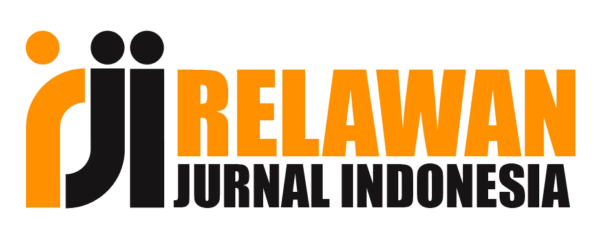Penerapan Cooperative Learning Tipe TPSQ untuk Mengoptimalkan Kemampuan Membuat Peta Konsep dan Prestasi Belajar Siswa Kelas VIII pada Materi Optik
Abstract
Pemahaman konsep siswa merupakan bagian penting dalam pembelajaran, pemahaman konsep dapat ditingkatkan melalui penggunaan peta konsep dalam pembelajaran. Hasil studi pendahuluan menunjukkan persentase siswa yang dapat menentukan konsep hanya 63,89% konsep utama, 55,56% konsep inklusif, 36,11% konsep kurang inklusif dan 25% konsep spesifik. Hal ini menunjukkan bahwa perlu adanya model pembelajaran yang dapat meningkatkan kemampuan siswa dalam membuat peta konsep. Model pembelajaran cooperative learning tipe think pair square (TPSq) diprediksi dapat meningkatkan kemampuan membuat peta konsep. Tujuan penelitian ini untuk mengetahui kemampuan dalam membuat peta konsep dan prestasi belajar siswa setelah diterapkannya model cooperative learning tipe Think Pair Square (TPSq). Jenis penelitian ini adalah pre-experimental dengan desain one-group pretest-posttest design. Sampel penelitian dilakukan kepada 27 siswa kelas VIII salah satu SMP di Kota Bandung. Data dikumpulkan melalui tes, peta konsep siswa, dan lembar observasi keterlaksanaan pembelajaran. Hasil menunjukan bahwa adanya pengaruh dari penerapan cooperative learning tipe TPSq terhadap kemampuan membuat peta konsep dengan nilai rata-rata peta konsep untuk setiap pertemuan adalah 68,13 kategori sedang, prestasi belajar siswa pada materi optik meningkat dengan nilai n-gain sebesar 0,5 kategori sedang dan nilai koefisien korelasi sebesar 0,50 kategori cukup.
Kata Kunci: Cooperatie learning; Peta konsep; Prestasi belajar.
ABSTRACT
Understanding student’s concepts is an important part of learning, conceptual understanding can be improve through the use of concept maps in learning. Preliminary study results show the percentage of students who can determine the concept only 63.89% of the main concept, 55.56% inclusive concept, 36.11% less inclusive concept and 25% specific concepts. This shows that need a learning model that can improve students' ability in making concept maps. Cooperative learning model type think pair square (TPSq) is predicted to improve the ability to create concept maps. The purpose of this study is to determine the ability to create concept maps and student achievement after the implementation of cooperative learning model Think Pair Square (TPSq). This type of research is pre-experimental with one-group pretest-posttest design. The sample of the research was done to 27 students of class VIII one of junior high school in Bandung. Data were collected through by test, student concept maps, and instructional learning observation sheets. The result shows that the influence of the implementation of cooperative learning TPSq type on the ability to create concept map with average value of concept map for each meeting is 68,13 medium category, student achievement on optical material increases with n-gain value equal to 0.5 medium category and value of correlation coefficient of 0,50 enough category.
Keywords: Cooperative Learning; Concept Maps; Learning Achievement.
Full Text:
PDF (Bahasa Indonesia)References
Slavin, Robert E. (1980). Cooperative Learning. Journal of American Educational Research Association. DOI: 10.3102/00346543050002315.
Siegel, C. (2005). Implementing a research-based model of cooperative learning. The Journal of Educational Research. 98 (6).1-15.
Anwar, La Eru Ugi. (2017). Penerapan Model Pembelajaran Kooperatif Tipe Think Pair Square pada Materi Ruang Dimensi Tiga Untuk Meningkatkan Prestasi Belajar Matematika Siswa Kelas X SMA Negeri 1 Baubau. Jurnal Penelitian Pendidikan dan Pengajaran Matematika Vol. 1 No. 4.
Sussi Widiastuti, dkk. (2013) Implementasi Peta Konsep Menggunakan Model
Pembelajaran Kooperatif Tps Sebagai Cognitive Diagnostic Assessment. Pendidikan Sains Pascasarjana Universitas Negeri Surabaya Vol. 2 No.2
Michelin Wara J, dkk. (2012). Model Cooperative Learning Tipe Think Pair Square Dalam Pembelajaran Matematika Di Kelas VII SMPN 1 Pulau Punjung. Jurnal Pendidikan Matematika Vol.1 No.1
Suprijono, Agus. (2015). Cooperative Learning Teori dan Aplikasi PAIKEM. Yogyakarta: Pustaka Pelajar.
Novak, J. D., Gowin, D. B, & Johansen, G. T. (1983). The use of concept mapping and knowledge vee mapping with junior high school science students. Journal Science Education, 67(5), 625–645.
Kandil Igec, Sebnem. (2009). Analysing Concept Maps as an Assessment Tool in Teaching Physics and Comparison with the Achievement Test. Internasional Journal of Science Education.Vol.31, No.14, 15 September pp.1897–1915
Coutinho, Edson. (2014). Concept Maps: Evaluation Models for Educators. Journal of Business and Management Sciences, 2014, Vol. 2, No. 5, 111-117.
White R and Gunstone R. (1992). Probing Understanding (London: The Falmer Press).
McClure, J. E., Sonak, Brian, Suen, H. (1999). Concept Map Assessment of Classroom Learning: Reliability, Validity and Logistical Practicality. Journal of Research in Science Teaching. 36(4), 475-492.
Novak, J.D and Gowin D.B. (1984). Learning How to Learn. 21st. Cambridge, England Cambridge: Cambridge University Press
Whardani, Aisyah Ika. dkk. (2014). Pengaruh pembelajaran kooperatif model think pair square (TPSq) menggunakan strategi peta konsep dan peta pikiran terhadap prestasi belajar siswa materi ikatan kimia kelas XI SMA Negeri 1 Karanganyar tahun ajaran 2013/2014. Jurnal Pendidikan Kimia (JPK), Vol. 3 No. 2 Tahun 2014 Universitas Sebelas Maret. ISSN 2337-9995.
Chiou, Chei-Chang. (2008). The effect of concept mapping on students’ learning achievements and interests. Journal of Innovations in Education and Teaching International. DOI: 10.1080/ 14703290802377240.
Sugiyono. (2015). Metode Penelitian Pendidikan. Bandung: ALFABETA, CV.
Hake, R R. (1998). Interactive-engagement versus traditional methods: A six-thousand-student survey of mechanics test data for introductory physics courses. American journal of Physics, 66(1), pp.64-74.
Sudjana. (2013). Metoda Statistika. Bandung: TARSITO.
DOI: https://doi.org/10.17509/wapfi.v4i2.20158
Refbacks
- There are currently no refbacks.
Copyright (c) 2019 Nia Kurniasih, Purwanto Purwanto, Parsaoran Siahaan

This work is licensed under a Creative Commons Attribution-ShareAlike 4.0 International License.
The Journal Wahana Pendidikan Fisika http://ejournal.upi.edu/index.php/WapFi/ is licensed under a Creative Commons Attribution-ShareAlike 4.0 International License
The Journal WaPFi (Wahana Pendidikan Fisika).
All rights reserverd. pISSN 2338-1027 eISSN 2685-4414
Copyright © Faculty of Mathematics and Science Education (FPMIPA) Universitas Pendidikan Indonesia (UPI)










